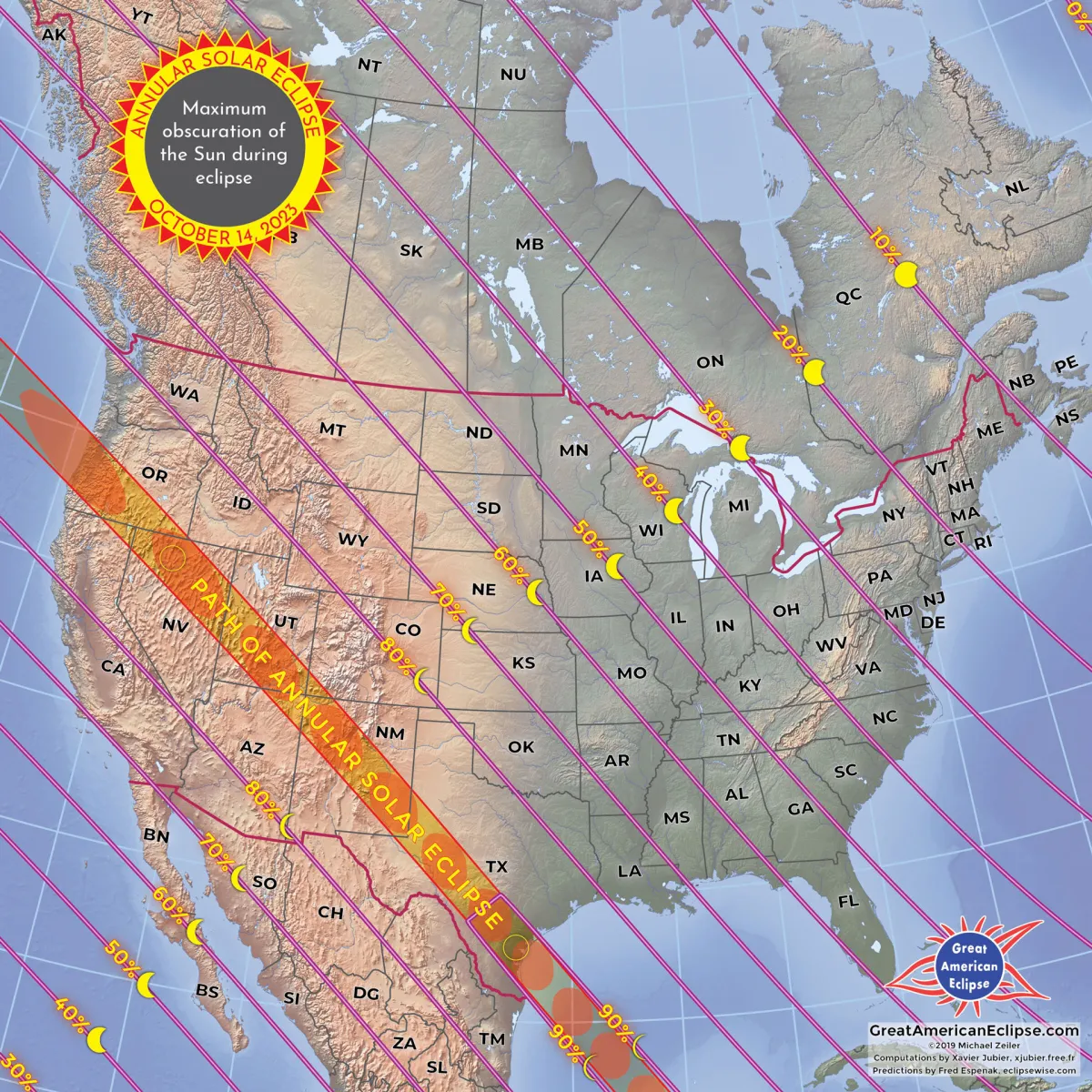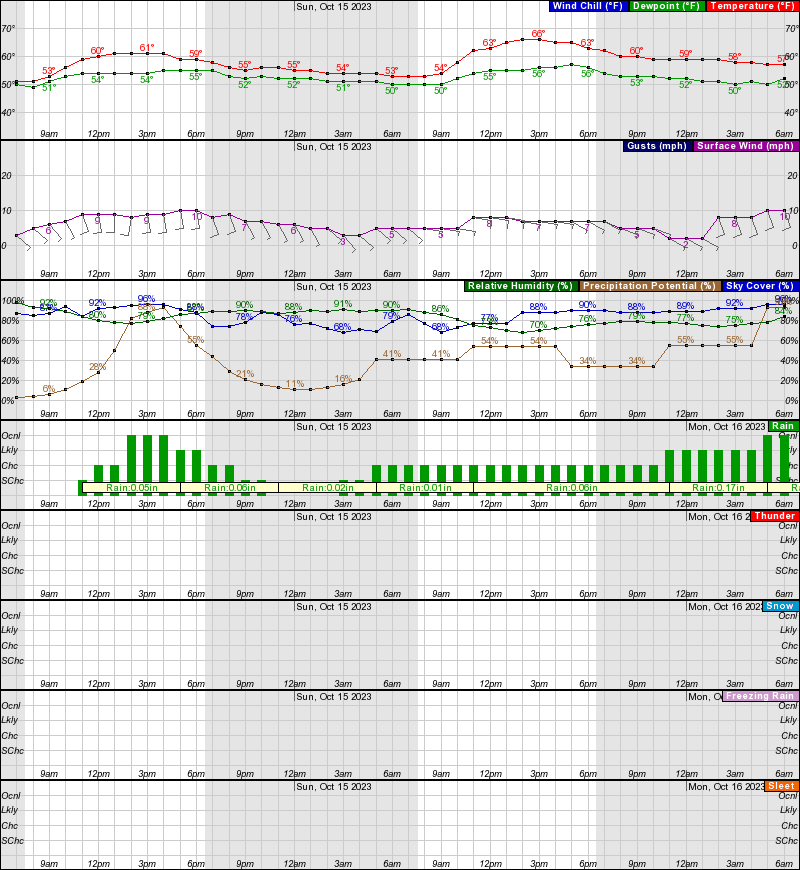
In the U.S., the annular solar eclipse begins in Oregon at 9:13 a.m. PDT and ends in Texas at 12:03 p.m. CDT.
https://science.nasa.gov/eclipses/future-eclipses/eclipse-2023/where-when

https://www.wunderground.com/maps/satellite/regional-infrared#

Dense clouds will block the view for my brother that lives in Portland )-:
https://forecast.weather.gov/MapClick.php?x=151&y=139&site=pqr&zmx=&zmy=&map_x=151&map_y=140
Today
Rain, mainly after 2pm. High near 60. East southeast wind 5 to 9 mph becoming south southwest in the afternoon. Chance of precipitation is 90%.

Because this is an ANNULAR eclipse (almost total) people will not be able to drive anyway in the US to see totality.
During an annular eclipse, the moons entire shadow passes over the sun but the moon is farther away than during a total eclipse which causes the shadow to be slightly smaller and not quite big enough to cover up the entire sun.
Next April 8th is the huge one for us.
Totality for 2 minutes right on top of Evansville!
https://science.nasa.gov/eclipses/future-eclipses/eclipse-2023/
During an annular solar eclipse, as shown here, the Sun is never completely blocked by the Moon. NASA/Bill Dunford
Waiting for the Sun - The Doors
https://www.youtube.com/watch?v=W1WnrjciO8c
Great Solar Eclipse 4-8-2024
Started by metmike - April 15, 2023, 10:09 a.m.
Regarding the solar eclipse yesterday (10/14), this is from a San Antonio, TX, NWS discussion just afterward (1:52PM):
“HOPEFULLY MANY OF YOU WERE ABLE TO SEE THE ECLIPSE NEAR THE PEAK OBSCURATION TIME. TEMPERATURES CURRENTLY RANGE FROM THE MIDDLE 60S TO LOWER 70S AND LOCATIONS CLOSER TO THE TOTAL ANNULARITY ACTUALLY DROPPED ABOUT 2-5 DEGREES WITH THE PEAK OBSCURATION.”
———————————————
One can get a good idea of the cooling influence of the eclipse by looking at Austin’s hourlies from yesterday since they had near full sunshine and no front coming through. The partial started at 10:24AM, peak obscuration (nearly 90% though not annularity) was at 11:54AM, and the partial ended at 1:32PM. Note the steady rise 8-10AM, followed by a slowing of the warming at 11AM once ~1/2 hour into partial, a cooling of 3F 11AM-noon when going from some partial to the near 90% obscuration peak, the most rapid hourly warming noon-1PM when going from peak to losing most of the obscuration, and then steady warming through 4PM after the eclipse ended:
8AM: AUSTIN/BERGSTM PTCLDY 62 41 46 N14
9AM: AUSTIN/BERGSTM MOSUNNY 64 41 42 N16
10AM: AUSTIN/BERGSTM MOSUNNY 67 40 37 N20G29
11AM: AUSTIN/BERGSTM MOSUNNY 68 41 37 N14
Noon: AUSTIN/BERGSTM MOSUNNY 65 41 41 N12
1PM: AUSTIN/BERGSTM MOSUNNY 70 40 33 N16
2PM: AUSTIN/BERGSTM MOSUNNY 74 41 30 N15
3PM: AUSTIN/BERGSTM MOSUNNY 76 39 26 N14G22
4PM: AUSTIN/BERGSTM MOSUNNY 78 39 24 N13
That was interesting, Larry.
When my son and I watched the total eclipse several years ago, it was a sunny, hot August day, very early afternoon.
Temperature dropped, maybe as much as 10 degrees from 95 to 85 degrees.